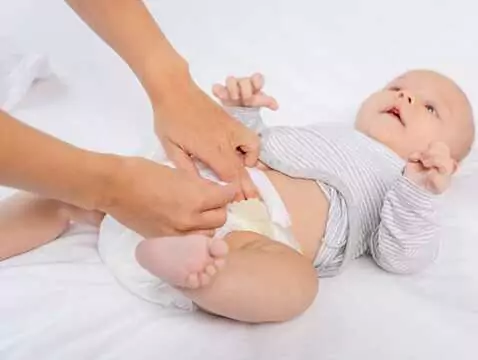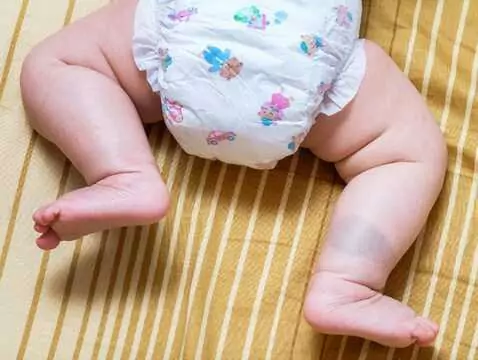Infants and young children often develop skin lesions resulting from mechanical or chemical irritants. The child's genitourinary area, known as the nappy area, is particularly vulnerable to abrasions, maceration, moisture, faecal and urine residues, chemicals contained in cosmetics, detergents, nappies or washing wipes.
If parents use cloth nappies they should be washed in warm water after the initial rinsing in cold water, rinsed thoroughly to remove odours and soap residues. During antibiotic treatment, it is important to remember to administer a probiotic prophylactically, thus minimising the risk of diarrhoea. During this period, special attention should also be paid to the care of the nappy area. After a nappy change, hands should be washed thoroughly to avoid transferring bacteria and fungi that may colonise the nappy area to other parts of the child's body [9,10,11,12,13].
If, in spite of proper care and preventive measures, a child develops nappy rash, it is necessary to check whether the cosmetic and nappy products used so far are irritating or allergenic and to continue the existing non-pharmacological measures. If the skin lesions do not resolve within 2-3 days, become more severe, extend beyond the nappy area and the child has a fever, it is necessary to see a doctor who will assess the child and recommend treatment with pharmacological agents such as topical anti-inflammatory preparations (weak to moderate steroids), anti-fungal agents or, in more severe cases, general antibiotics [1,3,4,7,9,10,11,12,13].
In cases of severe anxiety or pruritus, antihistamines are helpful [4]. Nursing preparations can be used together with therapeutic preparations, and it is advisable to apply oil on top of these preparations as it reduces the absorption of therapeutic agents into the nappy. In order not to further irritate the inflamed skin, the protective layer of skin care products should not be rubbed off at nappy changes, but washed off gently with a cotton swab soaked in mineral oil, or an additional layer should be applied over the existing one [1,3,4,9,10,11,12,13].
.webp)
photo: Sudocrem
The vast majority of cases of nappy dermatitis heal without complications in the outpatient setting using non-pharmacological treatments [3]. It is important to identify the causative agents of nappy dermatitis and eliminate them from the child's environment. This will avoid further exposures often leading to more severe skin reactions [7].
If you want to know what nappy rash is, click HERE
How can you recognise nappy rash? Click HERE









